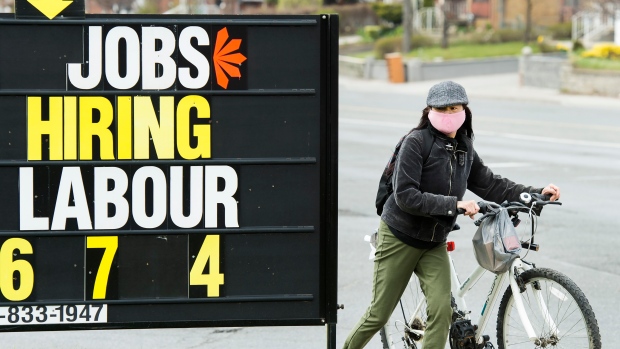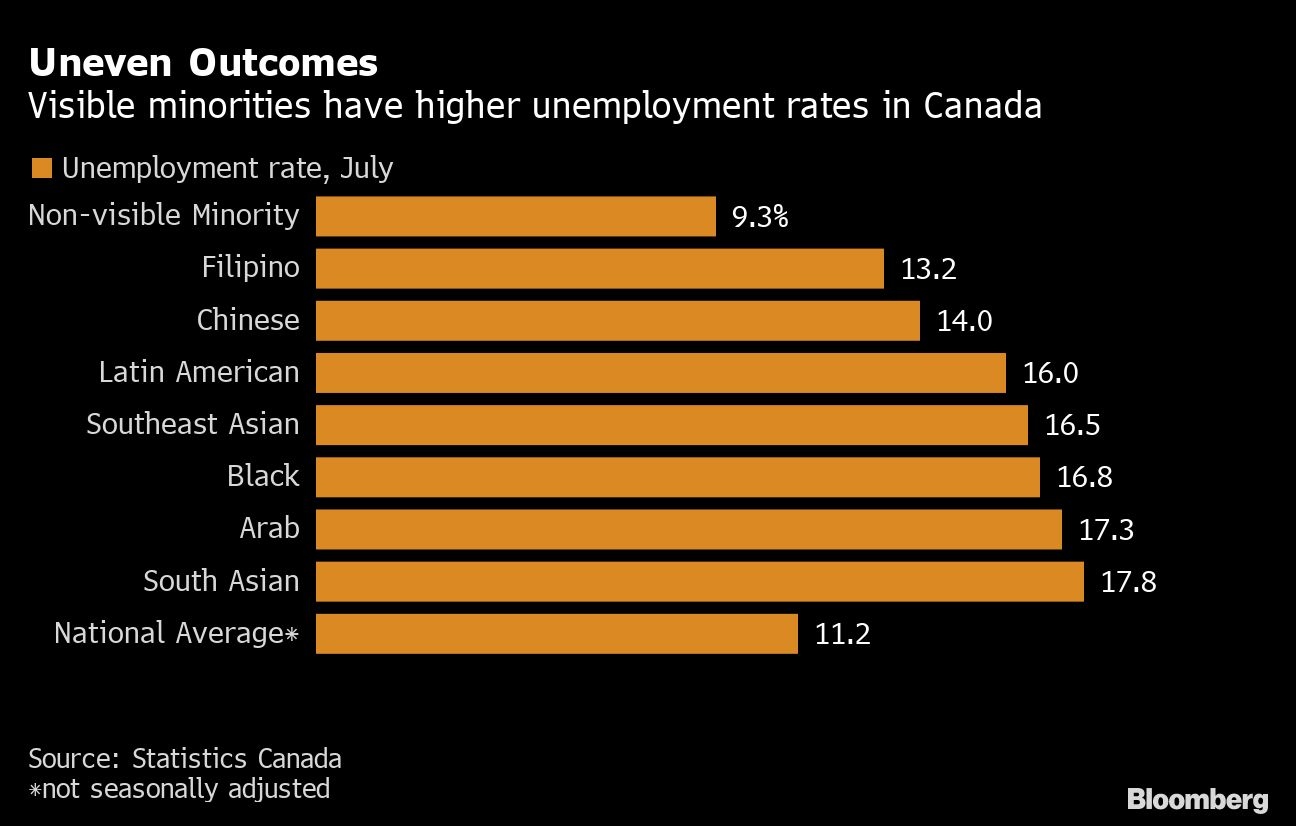Aug 7, 2020
Black, Asian workers see biggest jobless rate spikes in Canada
, Bloomberg News

Visible minorities were among those hardest hit by Canada’s recession, with some groups reporting jobless rate increases about double those of the least affected.
The unemployment rate for South Asian and Chinese Canadians was 8.8 percentage points higher on average in July from a year earlier, compared with 4.4 points higher for those who weren’t designated as either a visible minority or aboriginal, according to data released for the first time on Friday by the country’s statistics agency.
Black Canadians and Filipino Canadians saw an average increase of 6.3 percentage points in their jobless rate.
Adding to the picture of an uneven labor market, several minority groups had significantly higher jobless rates than the majority, the data show. Around 17 per cent of South Asian, Arab and Black Canadians were unemployed in July, compared with a national average of 11.2 per cent. Among White Canadians, the unemployment rate is 9.3 per cent.

The high unemployment rates among visible minorities may be a reflection of the industries that were disproportionately hit by c-19 shutdowns. The accommodation and food services industry saw the highest proportion of jobs lost during the height of the pandemic. Within that industry, Korean, Filipino and South East Asian Canadians are most likely to be employed.
The collection of race data will provide a fuller picture of how different Canadians are coping through the crisis, and be “a critical first step towards addressing inequity in our labour force,” Carla Qualtrough, minister of employment, said Friday in an emailed statement.
While Statistics Canada didn’t release data for previous months, employment among immigrants is rebounding more slowly, suggesting a similar trend may be underway for visible minorities.


